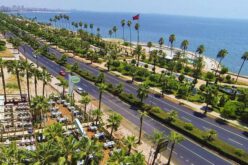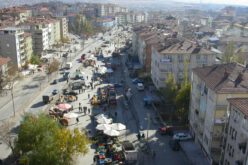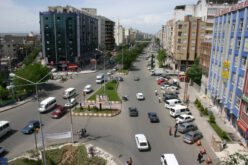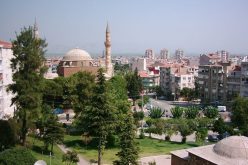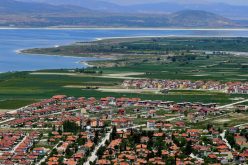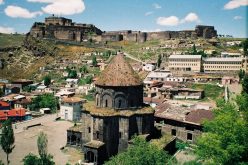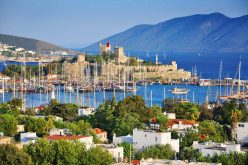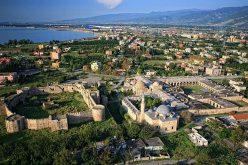Osmaniye
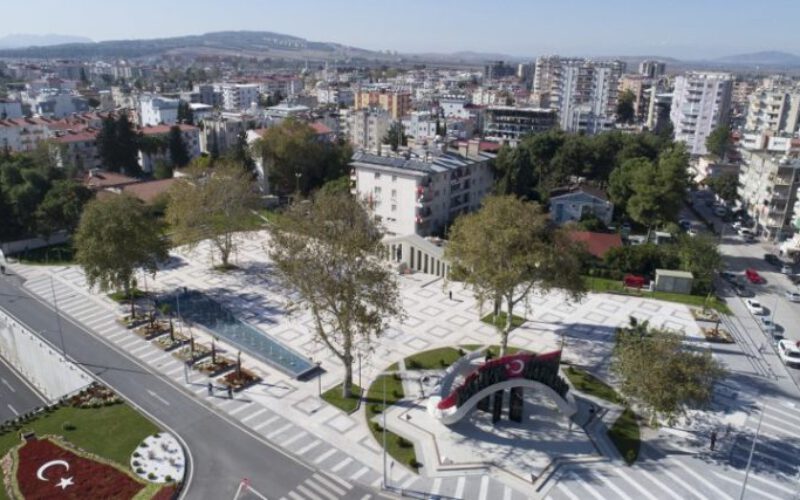
Osmaniye
Osmaniye is located on the eastern edge of the Cukurova plain in the foothills of the Nur Mountains, a small city with fertile and rich agricultural land in Turkey. Situated on a heavy traffic location as connecting Cukurova to Eastern part of Anatolia, Osmaniye is on the gateway between Anatolia and the Middle East. It has borders with cities Adana on the west, Kahramanmaras on the northeast, Gaziantep on the southeast and Hatay on the south. Osmaniye is on the Silk Road, a place of strategic importance and has been a settlement for various civilizations including the Hitites, Persians and Romans. The Islamic presence in the area was first established by the Abbasid Caliph Harun Rashid, auxiliaries in his army being the first Turks to fight in Anatolia. They obviously took a shine to the place and following the Turkish victory over the Byzantines at Malazgirt in 1071 waves of Turkish conquest began.
The Nur Mountains were settled by the Ulaslı tribe of the Turkmens.
Places To Visit ;
Karatepe – Aslantepe Open Air Museum has the ruins from antiquity. The structure was constructed as a border castle by the Hitites King Azatiwatis in 8th Century BC. The city is surrounded by high towers and castles which are the ruins of Assyrians.
Aslantas Dam Lake is worth a visit, too. Museum is located at the southeast of Kadirli district and is at 22 kilometers distance to the district, 30 kilometers distant to the Osmaniye Province and 130 kilometers distant to Adana province. There are two burnt building ruins which are assumed to be the palace and the grain storage wells located on the hill. The castle has two main entrances which are located at southwest and northeast respectively. There are two statues of lions with broken pieces at the southwest entrance gate. At the left and right side chambers, there are reciprocal Finike (peg writings) and Hittite hieroglyph inscriptions located on the swarthy and light yellow, hard pieced basalt stone blocks in the style of wall plating depicting the daily living and religious activities in the form of various figure relieves (stone embossed designs) and similar inscriptions. The 3 meter long statue depicting the God of Storms is located inside the gate. At the southeastern gate, there are two reciprocal sphinxes with human heads and lion bodies. The left and right chambers contain the relief of the God of Sun and various other relieves together with the reciprocal Finike (peg writings) and Hittite hieroglyph inscriptions.
Bodrumkale – Kastabala City (Hierapolis) has one of the most important ruins of Ottoman Empire. There are also two historical churches, Ancient Roman Bath (Hamam), column street, 5000 people capacity antique theater, stadium, water arch, ruins and rock carving tombs. It is located in the borders of Kesmeburim Village and Bahce Village which are at 15 kilometers distance to Osmaniye province. The most important ancient remains that could be able to reach today in good condition in Kastabala are the avenue with pillars and its amphitheater with five thousand spectator capacity. Beside those, the other important ruins of the ancient city are two churches, the castle, the Roman bath , the stadium, the necropolis’ surrounding all around the city and the ruins of the aqueduct constructed over the Ceyhan river located approximately 5 km north-east of the city. Kastabala is one of the most important promenade areas and touristic places of Osmaniye province. There are grave caves (Cancan Tomb) around the Karapinar Area. The most important one is the Toprakkale castle located in Toprakkale district. The ruins of ancient Kınık city (Öranşar) are located in the north of the castle on Adana highway. The ruins of Haruniye castle, Saman castle and Kurtlar castle are located in the Düzici district and the ruins of Karafenk castle and Savranda castle at Kalecik village are located in Hasanbeyli district. The Finike (peg writings) discovered in this ancient city had provided a key for the decryption of the Hittite hieroglyphs which were not been able to be decrypted wholly before. The Hitite inscriptions in the world had been primarily decrypted and read in this ancient city. After the decryption of these inscriptions, the entire hieroglyph inscriptions located in Anatolia extending to the date of BC 2000 was been able to read.
Osmaniye Karatepe-Aslantas A Late Hittite Fortress: The fortress of Karatepe-Aslantaş (in the province of Adana, now Osmaniye and in the district of Kadirli ) was founded in the 8th century B.C. by Azatiwatis, ruler of the plain of Adana as a frontier castle against the wild hordes lurking in the north. He named it Azatiwadaya. A caravan road leading from the southern plains up-to the Central Anatolian plateau, skirted it on the west, the Ceyhan river (antique Pyramos)- now the Aslantas dam lake-on the east. Two monumental Tshaped gate-houses, flanked by high towers. Gave access to the citadel. An entrance passage between two towers led up to a double-leafed wooden gate, which swung on basalt pivot-stones, from there to two lateral chambers and further on into the citadel. In a holy precinct at the inner entrance of the southwest gate stood the monumental statue of the Storm-God on its double bull-socle. The inner walls of the gate-houses were adorned with sculptures of lions and sphinxes, inscriptions and reliefs, depicting cultural, mythological and daily-life scenes carved on blocks of basalt. A bilingual text in Phoenician and Hieroglyphic Luwian, the longest known texts in these languages, was inscribed on slabs of each gate with a third one in Phoenician on the Divine Statue, constituting the key for the final decipherment of the Hieroglyphs, (known in Anatolia since the 2nd mill B.C.), being thus reminiscent of the famous Rosetta Stone. After the fall of the Hittite Empire (which ruled Central Anatolia in the 2nd mill B.C.), due to the invasion of the “Peoples of the Sea” (around 1200 B.C.), small kingdoms such as those of Malatya, Sakcagözü, Marac, Kargamıs, Zincirli, sprang up south of the Taurus mountain range. They were conquered and destroyed in the course of various Assyrian campaigns. The reign of Asatiwatas coincides with this period. His citadel was probably looted and burnt down to the ground by Salmanassar V around 720 B.C. or by Asarhaddon around 680 B.C. Religious Monuments The Alacami (Kadirli) Mosque located at the city center and constructed in the 5th century AC at the Roman period is the most important mosque of the province.
The Agacabey Mosque located in the Bahce district is worth seeing.
Ala Mosque (Kadirli). The mosque is originally a basilica belonging to the Roman period and is one the rarest creations that could stand still since that period. The basilica was inspected to be affected from the style of Syria and was transformed into a church in 12th century with the assistance of the abscissa and in 1489 with the addition of a minaret and a niche, the structure was transformed into a mosque by the ruler of Dulkadiroğulları, Alaüddevle. The structure is an important religious structure which belongs to both the Roman period, Byzantine period and also the Ottoman Period. The lower sections of the mosque contain burial chambers belonging to the Byzantine period.
Aslantas National Park is on the river Ceyhan, around 40km northeast of Osmaniye, and west of Gaziantep in the southeastern Mediterranean region. The park has a fascinating history and the Karatepe-Aslantas museum was the site of an area inhabited for almost 4000 years. The Hitites, who settled in Kisilirmak in Anatolia in 2000 BC, established a kingdom there in 1750 BC, and shortly afterwards it became the most important kingdom in the east. The Hittite Empire was demolished in Hattusas, and in 800 BC they governed this area led by King Assatiwada. Some of the most interesting ruins are the lion sculptures at the north and south border gates between Karatepe and Aslantas, which can be seen from Domuztepe at the opposite shore of the Ceyhan.
Most of the ruins have been restored and are exhibited at the open-air museum at the site. Another important feature is the archaeological excavations that have unearthed many facts about Hittite hieroglyphics. Other interesting places to visit date back to the Roman and Byzantine empires, including colourful mosaics found on the ground of a temple near the village of Pinarozu, which is considered to be a unique piece of art. The museum is open between April and November. Plant life includes cluster pine, tamarisk and oak trees. Species of wildlife inhabiting the park include roe deer, pigs, jackals, rabbits, foxes and partridges, with carp in the River Ceyhan.
Write a Comment
Only registered users can comment.




